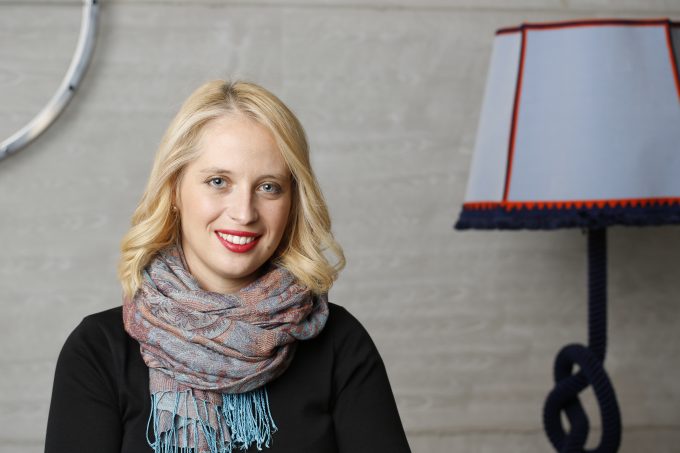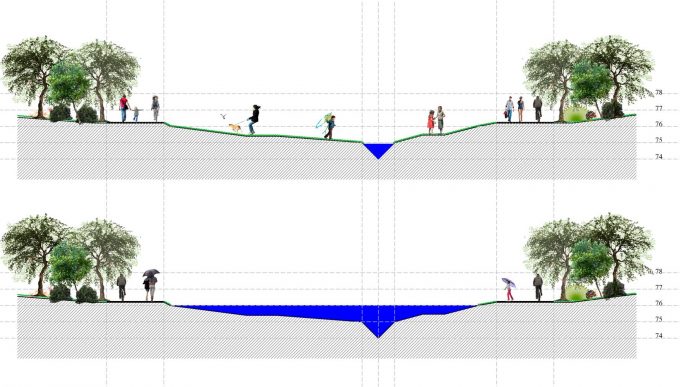
On the academic and business trajectory of the Serbian architect Milena Zindovic, in addition to our capital, where she graduated from the Faculty of Architecture in 2007, there are also New York, Ljubljana, and Sabac.
At the Cornell University in New York, where she went for a master’s degree, her majors were architecture and media. Cornell belongs to the “Ivy League” universities which include the eight most prestigious private universities in North America. Side by side with Harvard, Columbia, and Princeton, it is one of the most popular and most selective US universities, and the League got its name from the ivy plant which covers the oldest buildings of these higher education institutions. Coincidentally, Milena has something in common with it – both her and the ivy make various structures and projects green.
Besides the very advanced skills, from America, she also brought to Belgrade the taste and the appearance of diners, cheap fast food restaurants, which helped her transmit the real spirit of American culture to one of Belgrade’s catering facilities.
Stozice Arena in Ljubljana represents one of the projects she took part in, which gave us the reason to feel a specific dose of patriotism while walking the streets of the capital of Slovenia.
In 2013, she launched the regional portal for women’s creativity in architecture “Women in Architecture”, and two years later she found herself in Sabac where she, as the Director of PUC Plan Sabac, promoted a sustainable approach to urban development and by 2017, with her team, provided the citizens of Sabac with more multifunctional public spaces.
EP: You were the Director of the Public Urbanization Company Plan Sabac. In the context of humanity’s concern for the survival of our planet, how has this city contributed to the fight against climate change with its urban plans and projects?
Milena Zindovic: I spent two years in a leadership position in the PUC Plan Sabac. I resigned in November 2017. Sabac, as well as a significant part of our country, experienced the consequences of climate change during the floods of 2014. Apart from these extreme events, the result of overheating are also increasingly warmer and longer summers that are harder and harder to bear, especially in urban areas. As urban planners, we have the task to make the space we are planning more pleasant for everyone, and achieving excellent microclimate in urban areas is one of the prerequisites for accomplishing better and healthier life in the cities.
Since the beginning of my mandate in Sabac, I have advocated a sustainable approach in urban development, in particular, the development of multifunctional public spaces, which in addition to their purpose as gathering and circulating places, have the function of green oases, providing shade, and improvement of the microclimate. I am especially interested in nature-based solutions for urban development. We have incorporated them into several projects and plans, of which undoubtedly the most important for Sabac is the detailed regulation plan of Savapark, which envisages the adaptation of 300 hectares of the river border into a predominantly park space.

We have also applied the principles of the sustainable planning to the strategic urban planning, and in cooperation with EnPlus, consultants from Belgrade, we developed the Green – Blue Strategy of the City of Sabac. This strategy consisted of the analysis of all aspects of city life, urban systems, and functions, it also identified the resources, synergies, and interactions, and it gave us the basis for further planning with the goal not only the sustainability but also the regeneration of urban ecosystems.
On the strategic level, we also dealt with the question of urban mobility in Sabac, which is ideal for biking and walking because of its size and topography, but whose infrastructure is inadequate or nonexistent. Improving the quality of public spaces to encourage pedestrian and cycling transit is of vital importance for the city, therefore on that basis, the City of Sabac is also developing its Sustainable Urban Mobility Plan.
EP: You are one of the founders of the Smart City Association, which, among other things, promotes sustainable development and new technologies in spatial planning. Have you applied some of the “ecological” solutions and which ones?
Milena Zindovic The Smart City Association was established to promote and implement modern concepts of sustainable urban development in Serbia, and it is in every respect based on the challenges and experiences I had during my practice in Sabac. For us, it is not only the digital that is smart but every approach that makes sense and contributes to a better life for our citizens in our towns and cities. Many smart concepts are neither expensive nor complicated, they are not even technologically advanced, but they require smart planning and designing. As a part of our activities, we strive to highlight and draw attention to different aspects of sustainability our communities lack. So far, we have had events related to accessibility, gender equality, and climate change.
Along with the City of Sabac, we participated in the public call for the Open Data Challenge, which is implemented by the UNDP and the Ministry of Environmental Protection as part of the Local Development Resistant to Climate Change project. The goal of this project is to reduce the greenhouse gas emissions, and we applied with a plan that proposes the data collection on different methods of heating in households in Sabac and by the association of the energy sources and methods of heating with the greenhouse gas emissions. We were rewarded, along with seven other local self-government, and in the next six months, we are going to participate in the Climate Incubator which was inaugurated within this project.
Read the whole interview in the new issue of the Energy portal Magazine on SUSTAINABLE ARCHITECTURE, July 2018.
Interview by: Jelena Kozbasic



